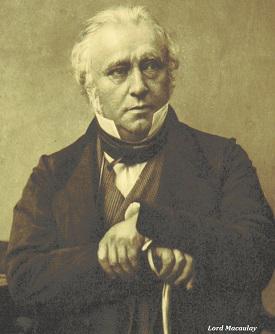The British laid the foundations of a new system of dispensing justice through a hierarchy of civil and criminal courts.
Though given a start by Warren Hastings, the system was stabilized by Cornwallis in 1793.
In each district was established a Diwani Adalat, or civil court, presided over by the District Judge who belonged to the Civil Service.
Cornwallis thus separated the posts of the Civil Judge and the Collector.
Appeal from the District Court lay first to four Provincial Courts of Civil Appeal and then, finally, to the Sadar Diwani Adalat.
Below the District Court were Registrars' Courts, headed by Europeans, and a number of subordinate courts headed by Indian judges known as Munsifs and Amins.
To deal with criminal cases, Cornwallis divided the Presidency of Bengal into four Divisions, in each of which a Court of Circuit presided over by the civil servants was established.
The civil courts applied the customary law that had prevailed in any area or among a section of the people since times immemorial.
In 1831, William Bentinck abolished the Provincial Courts of Appeal and Circuit. Their work was assigned first to Commissions and later to District Judges and District Collectors.
Bentinck also raised the status and powers of Indians in the judicial service and appointed them as Deputy Magistrates, Subordinate Judges, and Principal Sadar Amins.
In 1865, High Courts were established at Calcutta, Madras, and Bombay to replace the Sadar Courts of District and Nizamat.
The British also established a new system of laws through the processes of enactment and codification of old laws.
The traditional system of justice in India had been largely based on customary law which arose from the long tradition and practice.
Though many laws were based on the shastras and shariat as well as on imperial authority. However, the British gradually evolved a new system of laws.
British introduced regulations, codified the existing laws, and often systematized and modernized them through judicial interpretation.
The Charter Act of 1833 conferred all law making power on the GovernorGeneral-in-Council.
The Indian legal system under the British was based on the concept of equality before law. This meant that in the eyes of law ‘all men were equal.’
The same law applied to all persons irrespective of their age, religion, or class.
Previously, the judicial system had paid heed to caste distinctions and had differentiated between the so-called high-born and low-born.
For the same crime lighter punishment was awarded to a Brahmin than to a non-Brahmin. Similarly, in practice zamindars and nobles were not judged as harshly as the common people. In fact, very often they could not be brought to justice at all for their actions.
There was, however, one exception to this excellent principle of equality before law. The Europeans and their descendants had separate courts and even laws.
In criminal cases, Europeans could be tried only by European judges.
Many English officials, military officers, planters, and merchants behaved with Indians in a haughty, harsh, and even brutal manner. When efforts were made to bring them to justice, they were given indirect and undue protection and consequently light or no punishment by many of the European judges before whom alone they could be tried. Consequently, miscarriage of justice occurred (frequently).
In practice, another type of legal inequality emerged; justice became quite expensive as court fees had to be paid, lawyers engaged and the expenses of witnesses met. Courts were often situated in distant towns. Law suits dragged on for years.
The complicated laws were beyond the grasp of the illiterate and ignorant peasants.
Invariably, the rich could turn and twist the laws and courts to operate in their own favor. The mere threat to take a poor person through the long process of justice from the lower court to the highest court of appeal and thus to face harm with complete ruin often sufficed to bring him to heel.
The widespread prevalence of corruption in the ranks of the police and the rest of the administrative machinery led to the denial of justice. Officials often favored the rich.
In contrast, the system of justice that had prevailed pre-British times, was comparatively informal, speedy, and inexpensive.



